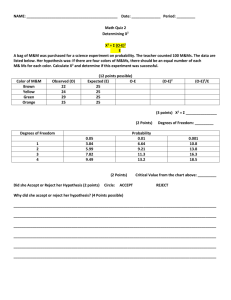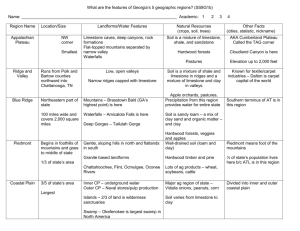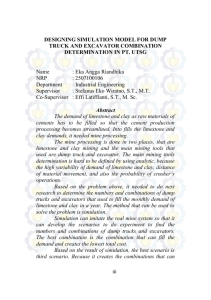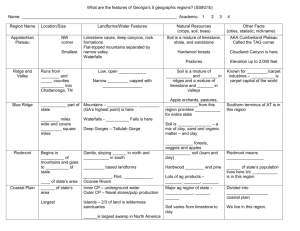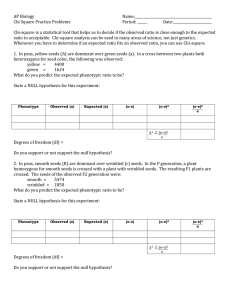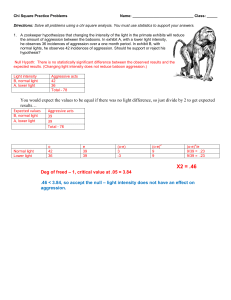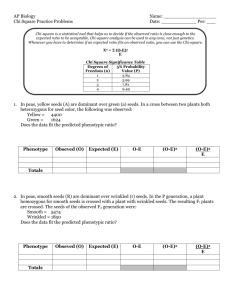Yates Correction Factor
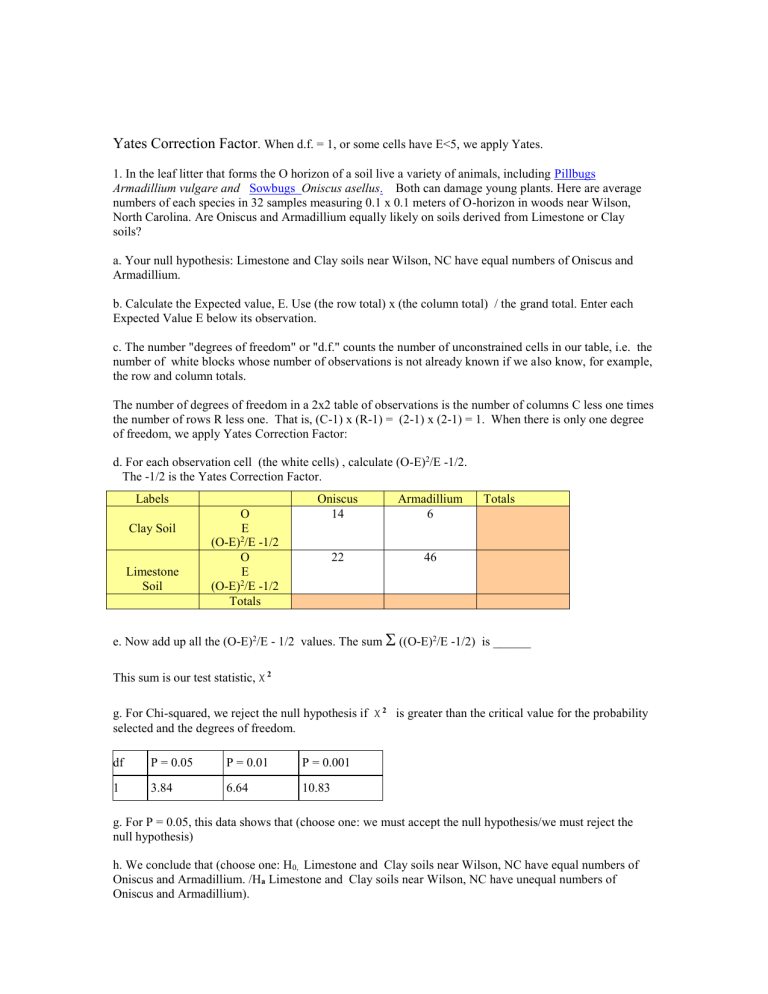
Yates Correction Factor
. When d.f. = 1, or some cells have E<5, we apply Yates.
1. In the leaf litter that forms the O horizon of a soil live a variety of animals, including Pillbugs
Armadillium vulgare and Sowbugs Oniscus asellus .
Both can damage young plants. Here are average numbers of each species in 32 samples measuring 0.1 x 0.1 meters of O-horizon in woods near Wilson,
North Carolina. Are Oniscus and Armadillium equally likely on soils derived from Limestone or Clay soils? a. Your null hypothesis: Limestone and Clay soils near Wilson, NC have equal numbers of Oniscus and
Armadillium. b. Calculate the Expected value, E. Use (the row total) x (the column total) / the grand total. Enter each
Expected Value E below its observation. c. The number "degrees of freedom" or "d.f." counts the number of unconstrained cells in our table, i.e. the number of white blocks whose number of observations is not already known if we also know, for example, the row and column totals.
The number of degrees of freedom in a 2x2 table of observations is the number of columns C less one times the number of rows R less one. That is, (C-1) x (R-1) = (2-1) x (2-1) = 1. When there is only one degree of freedom, we apply Yates Correction Factor: d. For each observation cell (the white cells) , calculate (O-E) 2 /E -1/2.
The -1/2 is the Yates Correction Factor.
Labels
Clay Soil
O
E
(O-E) 2 /E -1/2
Oniscus
14
Armadillium Totals
6
Limestone
Soil
O
E
(O-E) 2 /E -1/2
Totals
22 46 e. Now add up all the (O-E) 2 /E - 1/2 values. The sum
(O-E) 2 /E -1/2) is ______
This sum is our test statistic, X 2 g. For Chi-squared, we reject the null hypothesis if X 2 is greater than the critical value for the probability selected and the degrees of freedom. df P = 0.05 P = 0.01 P = 0.001
1 3.84 6.64 10.83 g. For P = 0.05, this data shows that (choose one: we must accept the null hypothesis/we must reject the null hypothesis) h. We conclude that (choose one: H
0,
Limestone and Clay soils near Wilson, NC have equal numbers of
Oniscus and Armadillium. /H a
Limestone and Clay soils near Wilson, NC have unequal numbers of
Oniscus and Armadillium).

